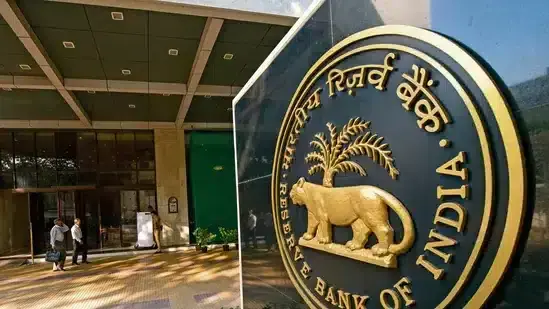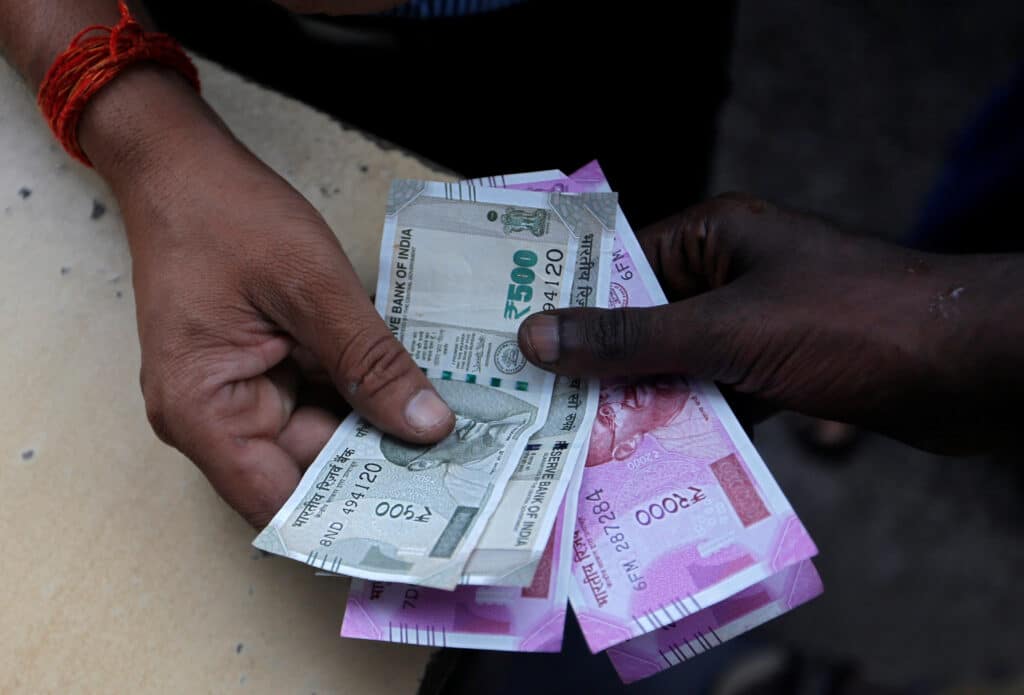Getting to Know India’s Liberalised Remittance Scheme
If you are looking to invest as an expat or high-net-worth individual, which is what I specialize in, you can email me (advice@adamfayed.com) or WhatsApp (+44-7393-450-837).
Introduction – what exactly is the Liberalised Remittance Scheme being implemented in India?
Before the Reserve Bank of India (RBI) rolled out the Liberalised Remittance Scheme (LRS), the process of sending funds to your loved ones abroad was largely cumbersome and time-consuming. However, the Liberalised Remittance Scheme facilitated easier payments to foreign countries and was open to all people who are deemed residents in India.
We’ll get into a more in-depth look at the Liberalised Remittance Scheme, according to data from the Reserve Bank of India.
A person must be a resident of India in order to take part in the Liberalised Remittance Scheme and send up to 250,000 US dollars in remittances outside of India during any given fiscal year. Only your Permanent Account Number (PAN) card is required to verify your identity when conducting these types of financial transactions between residents and their dependents living outside of the country, which are made possible by reputable dealers like banks.
In addition to remittances, the Liberalised Remittance Scheme is able to provide Indian citizens with services related to foreign exchange, which can be used for things like paying for medical costs or traveling. The Liberalised Remittance Scheme is not available for use by corporations, partnership firms, Hindu Undivided Family (HUF), or charitable trusts, though.

What is the maximum amount that can be transferred through the Liberalised Remittance Scheme?
The limit has been modified a great deal on multiple occasions. The maximum amount that can be transferred at this time is 250,000 dollars. There are no restrictions placed on the volume of transactions that can be carried out; however, the total value of all foreign exchange deals is only up to 250,000 dollars.
The Liberalised Remittance Scheme used to have a limit worth 25,000 dollars upon its launch in 2004, but it has been modified since then to account for the existing economic conditions on both large and small scale.
Are there instances where you can remit over 250,000 dollars under the Liberalised Remittance Scheme?
The following allows a remittance of over the 250,000-dollar limit and up to whatever cost is actually incurred, so long as it falls within the requirement of the country involved:
- Emigration
- Costs that are incurred while receiving medical treatment in a foreign country
- Studies in a foreign country
Nevertheless, the Reserve Bank of India must give its prior go-ahead before proceeding in this regard.
A person is allowed to remit an amount up to his net pay so long as s/he is considered a resident in India albeit on a temporary basis and is a citizen of a foreign nation (except Pakistan), or is an Indian citizen and is on secondment to the office, branch, unit, or joint venture in India of a foreign corporation.
In this context, net pay refers to the amount of income earned after all applicable deductions, including taxes and contributions to a pension scheme, among other things.
Any amount that is sent in accordance with the Liberalised Remittance Scheme during a financial year will be subtracted from the limit of 250,000 dollars. Meanwhile, the limit on the remaining balance will be made available.
Residents of India who are traveling outside of the country and making payments with international credit cards do not need the authorization of the Reserve Bank of India. However, the prohibitions on how an international credit card is used would still be enforced when it comes to the acquisition of restricted items.
How exactly does one go about participating in the Liberalised Remittance Scheme?
Under the Liberalised Remittance Scheme, money can be transferred from any Indian citizen to any other Indian citizen. It is open to minors, but the declaration form for the Liberalised Remittance Scheme requires the countersignature of a parent or legal guardian before they can participate.
Furthermore, under the Liberalised Remittance Scheme, members of the same family can opt to combine their individual remittances into one. This is allowed as long as every single member of the family complies with the terms and conditions of the program.
In order to comply with the guidelines of the Liberalised Remittance Scheme, a resident is not permitted to give a gift in a foreign currency to another resident who maintains an account in that currency outside of India.

What are not allowed under the Liberalised Remittance Scheme?
According to the Reserve Bank of India, the following are not permissible under the regulations of the Liberalised Remittance Scheme:
- Transfer of funds for any such intent that’s expressly forbidden, such as the acquisition of sweep stakes or lottery tickets, as well as banned magazines, among others.
- Transfers from India to foreign exchanges or overseas counterparties for the purpose of meeting margin requirements or responding to margin calls.
- Transfers of money abroad to pay for purchases of foreign currency convertible bonds (FCCBs) issued by Indian businesses on secondary markets in other countries.
- A transfer of funds for the purpose of overseas foreign exchange trading.
- Remittances of capital accounts, whether directly or indirectly, to certain territories that have been designated by the Financial Action Task Force (FATF) as “non-cooperative” every so often.
- Transfers of money, either directly or indirectly, to people or organizations that have been identified as presenting a substantial risk of engaging in terrorist acts, as warned independently by the Reserve Bank to other banks.
What are allowed under the Liberalised Remittance Scheme?
You are permitted to make expenditures in foreign countries for a variety of purposes, including but not limited to the pursuit of higher education, the acquisition of assets such as shares and property, for tourism, medical treatment, and other related activities. You also have the option of spending the money on things like gifts and donations, as well as supporting relatives who live in other countries.
You are able to conduct transactions using foreign currency if you open and keep accounts with foreign banks. These accounts can be opened in any supported foreign currency.
A Few More Things on the Liberalised Remittance Scheme You Should Be Aware Of
When employing the LRS scheme, you are required to keep a few things in mind at all times. The following are some of them:
Currency
Before you can engage in any kind of overseas transaction, such as investing or spending money in a foreign country, you are required to first convert Indian Rupees into US Dollars. The Liberalised Remittance Scheme addresses the regulations that direct the conduct of transactions of this kind.
Capital Account Transactions
You are permitted to make expenditures in foreign countries to pursue further studies, the acquisition of shares and property, for tourism, as well as medical treatment. You are also allowed to spend the money on gifts and donations, as well as to fund relatives who live overseas. You are able to use foreign currency for certain deals if you set up an account with foreign financial institutions.
The following are examples of transactions related to capital accounts that are permitted under the Liberalised Remittance Scheme:
- Opening, holding, and maintaining a foreign currency account with a bank located in a different nation
- The acquisition of residential or commercial property situated in a foreign nation
- Investing in stocks and bonds issued by foreign governments, as well as in mutual funds, private equity funds, and other types of investment securities.
- Loaning money to immediate family members of non-resident Indians, as outlined by the Companies Act of India.
- Establishing a wholly owned unit or a joint venture outside of India for any lawful commercial purpose, subject to the Overseas Direct Investments (ODI) prerequisites.
Current Account transactions
The following are examples of transactions related to capital accounts that are permitted under the Liberalised Remittance Scheme:
- You are allowed to conduct private visits
- Give gifts or donations
- Move to another country for work
- emigration
- Maintenance of certain family members in another country
- Business travels
- Medical treatment in another nation
Repatriation
If you have bought shares or participated in mutual fund investments in another nation, you are permitted under the regulations of the Liberalised Remittance Scheme to reinvest the earnings that you have received in that territory.
This is the case unless the investment was made in the form of international direct investment. Investors are not required to bring back into the country any of the interest or profits that they make off of their overseas deposits and investments.
What kinds of procedures and paperwork are required to proceed?
Under the Liberalised Remittance Scheme, residents are able to send money abroad in the form of a demand draft, which can be written in either the name of the resident or the name of a beneficiary. This must be done in conjunction with a self-declaration made by the sender in the approved form.
For the purpose of making remittances, individuals are permitted to set up foreign currency accounts with banks located outside of India, as well as maintain those accounts.
The following documentation is required to be provided by the person making the transfer:
- Designating a specific location within an authorized dealer bank as the one and only point of contact for all remittances to be processed through.
- Providing a completed Form A2 in order to purchase foreign currency
- Providing a Permanent Account Number (PAN)
- Complying with the Know Your Customer (KYC) and Anti-Money Laundering (AML) guidelines that have been established.
Under the Liberalised Remittance Scheme, financial institutions are not allowed to provide resident individuals with any kind of credit facility for the purpose of facilitating capital account fund transfers.
In accordance with the Liberalised Remittance Scheme, the prerequisites for sending money back home are as follows:
The individual is required to designate a branch of an Authorized Dealer (AD) as the conduit through which they intend to conduct all of their capital account transactions. At least one year should have passed since the individual opened a bank account at the financial institution before the money transfer could have been processed.
However, this restriction of a year does not apply to any transactions that take place on a current account. As a result of the fact that the fund transfer facility for allowable current account transactions under the Liberalised Remittance Scheme can also be offered by Full Fledged Money Changers (FFMCs), and as these FFMCs are unable to retain accounts of the senders of funds, this threshold of one year has been restricted to mere capital account transactions.
Despite this, FFMCs are obligated to ensure compliance with the Anti-Money Laundering Rules that are currently in effect as well as the Know Your Customer guidelines whenever they permit current account transactions.
The applicant has the option of using a new bank account in order to make remittances that are associated with the transactions that are allowed for their current account. If the applicant who wishes to make the transfer of funds is a new client of the bank, then the authorized dealer is responsible for performing due diligence concerning the account setup, operation, and maintenance.
Examining the applicant’s bank statements can provide the authorized dealer with evidence that satisfies their requirements regarding the origin of the funds. In the event that bank statements cannot be obtained, copies of the most recent income tax returns that have been filed or the assessment orders must be retrieved.
The applicant is responsible for submitting Form A-2 with information regarding the reason for the wire transfers. It is required of him or her to declare that the funds that are being considered for transfer are his or her own and that they will not be used for any activities that are restricted or regulated.
Are there any financial responsibilities in regard to taxes as part of the Liberalised Remittance Scheme?

All money transfers that exceed the limit of 700,000 Indian rupees are subject to tax deducted at the source, which is levied at a rate of five percent. On the other hand, if you choose to file your income tax return (ITR) using Form 26 AS, you can submit a claim for a reimbursement of the tax that was docked from your paycheck.
If any profits are realized on foreign investments executed under the Liberalised Remittance Scheme, then that profit is subject to levy in India. The amount of taxation is determined by the length of time the investment was kept.
A long-term capital gains tax of 20 percent is levied on the profit made from investments that have been held for two years or more. If neither of these conditions are met, the profits from such investments will be considered regular income and will be subject to taxation in accordance with the standard tax brackets.
Liberalised Remittance Scheme: Conclusion
The implementation of the Liberalised Remittance Scheme in India was a brilliant move, as it makes the whole process of wiring funds overseas for parents simpler and makes it possible for Indian citizens to take advantage of opportunities in international markets.
The frequency of transactions involving foreign countries has increased dramatically over the past few decades as a result of the increasing fluidity of geographical borders and the increasing integration of economies around the world. This type of transaction is made easier and more streamlined thanks to the Liberalised Remittance Scheme, which also helps protect the domestic currency from fluctuations in the global market.
Residents and business owners alike should educate themselves on the intricacies of LRS in order to enjoy a streamlined experience when it comes to money transfers and get the most out of their transactions involving foreign currency.
Pained by financial indecision? Want to invest with Adam?

Adam is an internationally recognised author on financial matters with over 830million answer views on Quora, a widely sold book on Amazon, and a contributor on Forbes.



